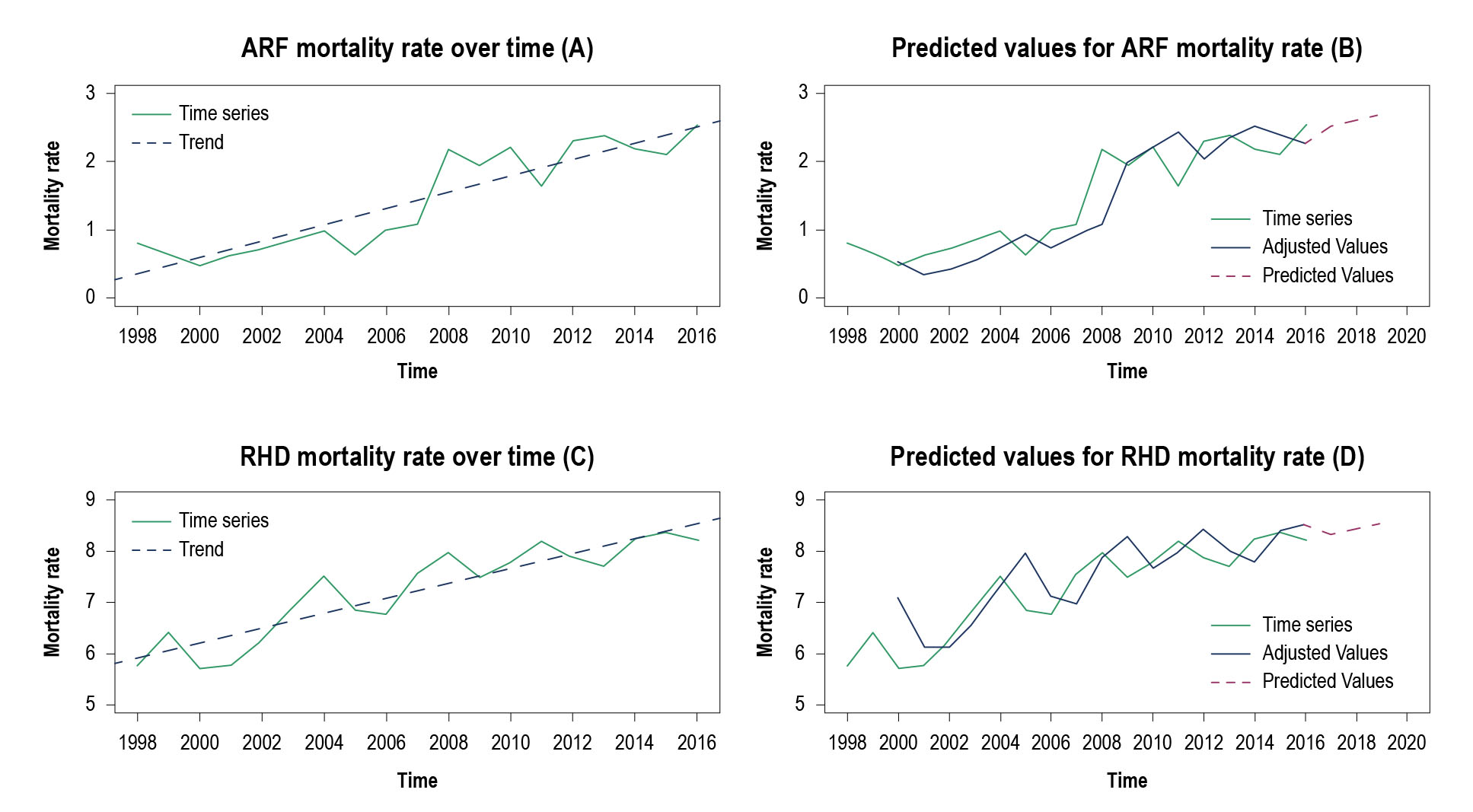Volume 113, Nº 3, September 2019
DOI: http://www.dx.doi.org/10.5935/abc.20190141
ORIGINAL ARTICLE
Rheumatic Fever: A Disease without Color
Estevão Tavares de Figueiredo
Luciana Azevedo
Marcelo Lacerda Rezende
Cristina Garcia Lopes Alves
Dr. Estevão Tavares de Figueiredo

Figure 1 – Growth trends and predicted values for Acute Rheumatic Fever (ARF) and Rheumatic Heart Disease (RHD) mortality rates. The model equation for the trend of the ARF (A) mortality rate was ARFMT = –237,79 + 0,12* Year, whereas for the trend of the RHD mortality rate (C) it was RDHMT = –286,11 + 0,15* Year. It should be noted that all trends were significant (p-value < 0.050), evidencing the increasing trend of the series over time.
Abstract
Background: Brazil has approximately 30.000 cases of Acute Rheumatic Fever (ARF) annually. A third of cardiovascular surgeries performed in the country are due to the sequelae of rheumatic heart disease (RHD), which is an importante public health problem.
Objectives: to analyze the historical series of mortality rates and disease costs, projecting future trends to offer new data that may justify the need to implement a public health program for RF.
Methods: we performed a cross-sectional study with a time series analysis based on data from the Hospital Information System of Brazil from 1998 to 2016. Simple linear regression models and Holt’s Exponential Smoothing Method were used to model the behavior of the series and to do forecasts. The results of the tests with a value of p < 0.05 were considered statistically significant.
Results: each year, the number of deaths due to RHD increased by an average of 16.94 units and the mortality rate from ARF increased by 215%. There was a 264% increase in hospitalization expenses for RHD and RHD mortality rates increased 42.5% (p-value < 0.05). The estimated mortality rates for ARF and RHD were, respectively, 2.68 and 8.53 for 2019. The estimated cost for RHD in 2019 was US$ 26.715.897,70.
Conclusions: according to the Brazilian reality, the 1-year RHD expenses would be sufficient for secondary prophylaxis (considering a Benzatin Penicillin G dose every 3 weeks) in 22.574 people for 10 years. This study corroborates the need for public health policies aimed at RHD. (Arq Bras Cardiol. 2019;113(3):345-354)
Keywords: Rheumatic Fever; Rheumatic Heart Disease; Cardiovascular Surgical Procedures/mortality; Hospitalization/economics; Antibiotic Prophylaxys/economics; Public Health Policy.















